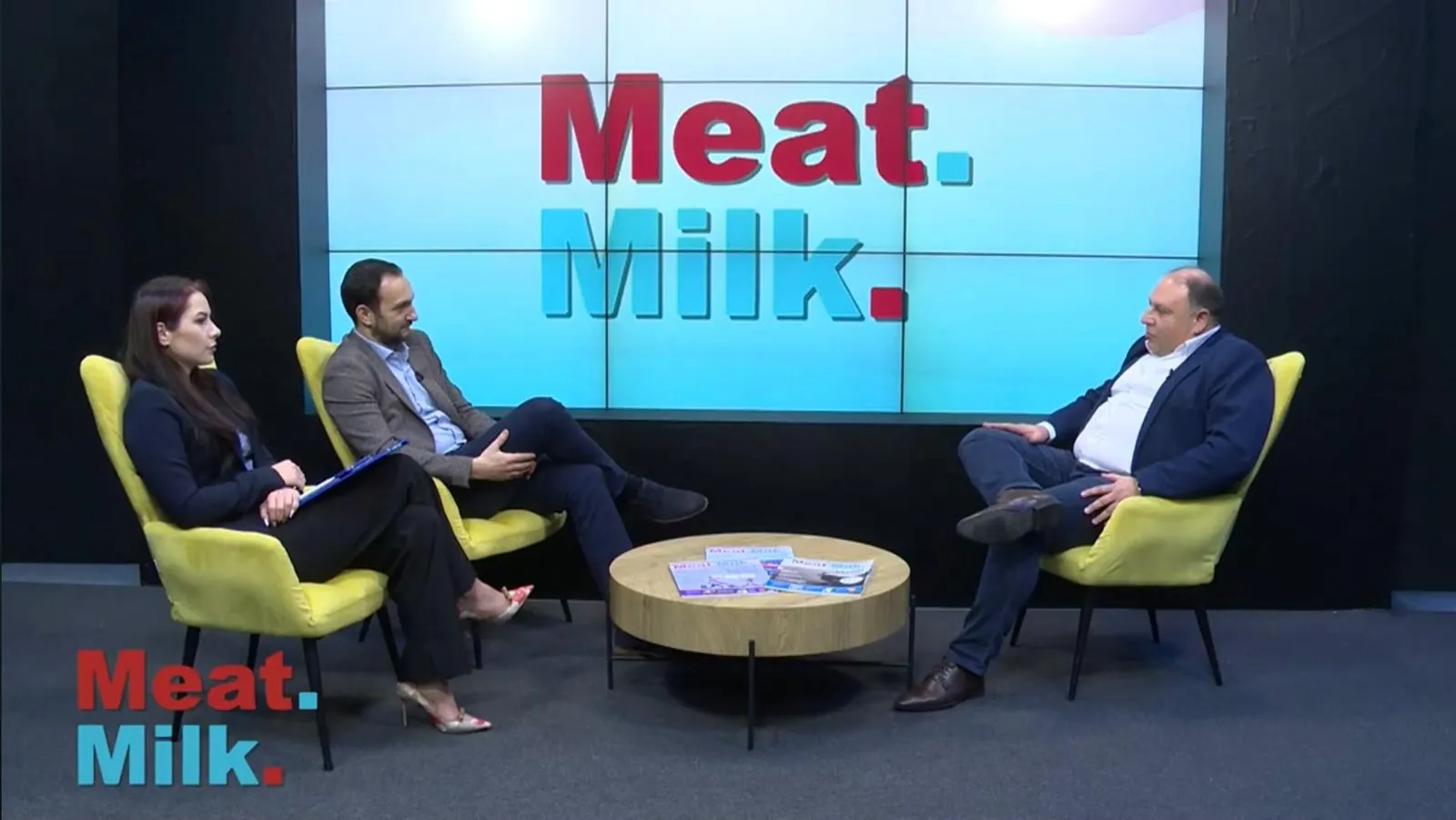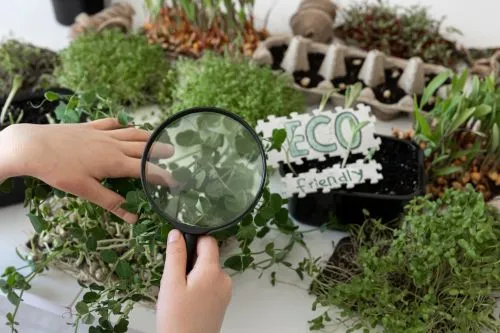
The formation of biofilms in dairy processing environments is of utmost importance as it can have a significant impact on hygiene, food safety, and the quality of milk and dairy products. A biofilm can be defined as a community of microorganisms attached to a surface, producing extracellular polymeric substances (EPS) and interacting with each other, as stated in the report titled "Advanced Dairy Science and Technology" by Trevor Britz and Richard Robinson.
Biofilm Formation
Biofilm development is a dynamic process that begins when planktonic cells of microorganisms attach to a surface. The attached cells irreversibly produce EPS, which allows cell-to-cell bridging and cell anchoring to the surface (Lindsay and Von Holy, 2006).
The development of microcolonies results from the aggregation and simultaneous growth of microorganisms, accompanied by EPS production. A mature biofilm consists of microorganisms within EPS-enclosed microcolonies interspersed with less dense regions of the polymeric matrix that include water channels transporting nutrients and metabolites (Stoodley et al., 1994).
Individual cells of the biofilm can also be actively released into the surrounding environment to attach and colonize other surfaces (Parsek and Greenberg, 2005). Importantly, cells within biofilms are physiologically distinct from their planktonic counterparts (Oosthuizen et al., 2001; Parsek and Fuqua, 2004).
Modern dairy processing facilities support and select for bacteria that form biofilms on surfaces in contact with milk or dairy products due to highly automated systems, prolonged production cycles, and extensive enclosed surfaces within processing lines (Lindsay and Von Holy, 2006).
The areas where biofilms most commonly develop are those that are the most difficult to use, clean, and sanitize. Dead ends, gaskets, joints, pumps, crevices, surface roughness due to surface defects, bypass valves, abrasive equipment parts, sampling taps, overflow siphons in filters, corrosion patches, etc., are hard-to-reach areas (Wong and Cerf, 1995).
The presence of nutrients or even microscopic food residues, as well as frequent cleaning, sanitization, or processing treatments, can individually or collectively influence biofilm development and structure (Chmielewski and Frank, 2003).
Biofilms can develop in environments with high microbial diversity (e.g., floor drains) or in environments dominated by one or a few microbial species, such as plate heat exchangers.
Potential Implications
The accumulation of biofilm in the dairy environment, especially its development on milk/product contact surfaces, carries important implications. Biofilms in dairy processing environments have the following potential implications:
-Microorganisms within established biofilms are highly resistant to treatment with antimicrobial agents (e.g., antibiotics, disinfectants, etc.) (Costerton et al., 1995; Lindsay and Von Holy, 1999). Lewis (2001) suggested that adherent cells within a biofilm can tolerate antimicrobial compounds at concentrations 10-1000 times higher than those needed to kill genetically equivalent planktonic bacteria.
-Biofilm cells have the ability to survive harsh environmental conditions, such as pH fluctuations, extreme heat or cold, low nutrient concentrations, and they are highly resistant to UV light exposure, chemical shock, starvation, and dehydration (Wong and Cerf, 1995; Hall-Stoodley et al., 2004; Hall-Stoodley and Stoodley, 2005).
-Post-pasteurization contamination, reduced shelf life, or potential product spoilage (Koutzayiotis, 1992; Koutzayiotis et al., 1992; Austin and Bergeron, 1995). Attached cells become irreversibly adsorbed to the surface, enabling organisms to resist mechanical cleaning procedures (Lundén et al., 2000).
Elements of Contamination
Foodborne pathogens and spoilage organisms can attach and produce EPS on food contact surfaces and other dairy product environments (Chmielewski and Frank, 2003; Hall-Stoodley and Stoodley, 2005; Lehner et al., 2005). Listeria monocytogenes is a well-adapted pathogen with the ability to thrive in cool, humid conditions that are ideal for biofilm formation in various environments.
Listeria spp. has been isolated from wooden shelves in cheese aging rooms (Noterman, 1994), processing and packaging equipment, and particularly in hard-to-clean, wet environments such as conveyor belts, floor drains, condensation, storage tanks, etc. (Charlton et al., 1990; Nelson, 1990).
The growth of L. monocytogenes in biofilms in food processing plants increases the overall contamination level in the facility and can be an indicator of unsatisfactory cleaning and sanitation procedures. Outbreaks of listeriosis and salmonellosis have been associated with post-pasteurization/processing contamination of milk, cheese, and ice cream as contributing factors (Brocklehurst et al., 1987; Hedberg et al., 1992).
Pathogenic bacteria can also coexist in a biofilm with other organisms, for example, Listeria, Salmonella, and other pathogens have been found in established Pseudomonas biofilms (Jeong and Frank, 1994; Fatemi and Frank, 1999).
Heat-resistant spore-forming organisms are commonly found in dairy product processing (Oosthuizen et al., 2001), and even in extreme environments such as alkaline solutions in reused CIP (Cleaning-in-Place) systems (Swart, 1995). Bacilli and other thermophilic bacteria can form a biofilm if hot fluid continuously flows over a surface for 16 hours or more (Frank, 2000).
Although the presence of Salmonella spp. is not well-documented, various studies have suggested that Salmonella can establish in biofilms on food surfaces (Joseph et al., 2001). The significance of bacterial growth and activity at solid-liquid interfaces on dairy product contact surfaces is also highlighted by Koutzayiotis et al. (1992).
These authors suggested that proteolytic enzymes may be produced and released from established Flavobacterium biofilms. It has also been found that the production of catalase by attached populations of Pseudomonas aeruginosa biofilms may be partially responsible for increased resistance to disinfectants containing hydrogen peroxide (Steward et al., 2000).
Reduction in heat transfer efficiency occurs when a sufficiently thick biofilm accumulates in locations such as plate heat exchangers (Mittelman, 1998). Microorganisms in biofilms can also be responsible for the corrosion of milk pipelines and tanks, due to chemical and biological reactions.
Detection of Biofilms
The most common methods currently available for detecting biofilms include:
- Plate-swabbing/plate-rinse methods. This method can be supplemented with total ATP bioluminescence testing.
- Contact plate methods and rehydratable dry film method. Contact plate methods are simpler than swabbing, but they may not be able to sample irregular or rough surfaces that are true biofilm niches. Additionally, microorganisms do not quantitatively adhere to the surface of the agar upon request, resulting in again the selection for a specific micro-population or underestimation of the number of microorganisms on the sampled surface (Chmielewski and Frank, 2003).
- ATP bioluminescence testing. The fastest biochemical method for detecting biofilms or effectively removing them can be monitored by the ATP bioluminescence test (Chmielewski and Frank, 2003). This test is a biochemical method for estimating total ATP collected by swabbing a surface. Total ATP is associated with the amount of product residue left on surfaces and also with microbial contamination collected by the swab. Results can be obtained in 5-10 minutes and are also a rapid method for determining cleaning efficiency and the hygiene status of factory surfaces (Reinemann et al., 2003).
Control and Removal of Biofilms
The most important factors contributing to biofilm formation are inadequate removal of residual soil from surfaces (cleaning), ineffective sanitation, and sterilization of milk/product contact surfaces. Microorganisms remaining on equipment and their surfaces can survive for extended periods, depending on the quantity and nature of residual soil, temperature, and relative humidity.
Milk is a highly nutritious medium, so any residual residue can promote bacterial growth, adherence to surfaces, and consequently, biofilm development (Wong and Cerf, 1995; Frank, 2000).
It is not practical to clean and sanitize frequently enough to prevent microbial attachment to surfaces since cell attachment can occur within minutes to hours. It has been suggested, however, that biofilm removal during cleaning is significantly enhanced by applying mechanical force to a surface, such as high-pressure sprayers and scrubbers.
Non-aerosol-generating detergents such as foam, as well as the use of disinfectants, will result in higher bacterial kill rates when used in conjunction with mechanical methods (Meyer, 2003).
Aerosol formation or small droplets often occurs during washing and splashing of surfaces, floors, and drain channels. Care should be taken not to contaminate cleaned areas or processing equipment. Typically, high-pressure water with low volume used for rinsing surfaces is sufficient. However, Gibson et al. (1999) found that overhead flow at a pressure of 17.2 bar did not improve biofilm removal.
Hygienic Design
Ideally, the configuration and equipment of the facility should be designed to prevent the accumulation of soil and water and allow for easy cleaning and sanitation operations. Issues often arise in locations such as dead spaces, pumps, and joints where gaskets must be used, and areas where surfaces cannot be adequately exposed to cleaning and sanitizing chemicals (Kumar and Anand, 1998).
Furthermore, modifying equipment surfaces through antimicrobial coatings and novel ideas for improving surface hygiene can ultimately help inhibit biofilm formation (Carpentier et al., 1998; Kumar and Anand, 1998; Meyer, 2003).
Cleaning procedures should effectively remove food residues and other dirt that may contain microorganisms or promote microbial growth. Current cleaning regimens include cold or hot water rinsing followed by the application of chemical agents, rinsing, and sanitizing (Frank, 2000). Cleaning can be achieved using chemical substances or a combination of chemical and physical forces (water turbulence or scrubbing).
High temperatures can reduce the need for physical scrubbing. Chemical detergents suspend and dissolve food residues by reducing surface tension, emulsifying fats, and peptizing proteins (Chmielewski and Frank, 2003). Problems such as corrosion and biological fouling in cooling systems by microbial biofilms are normally prevented/controlled through chemical treatment (Mattila-Sandholm and Wirtanen, 1992; Hiddink, 1995).
Research on the complex molecular mechanisms regulating EPS synthesis, microbial attachment, as well as biofilm development and detachment will ultimately lead to improved strategies for biofilm control.





